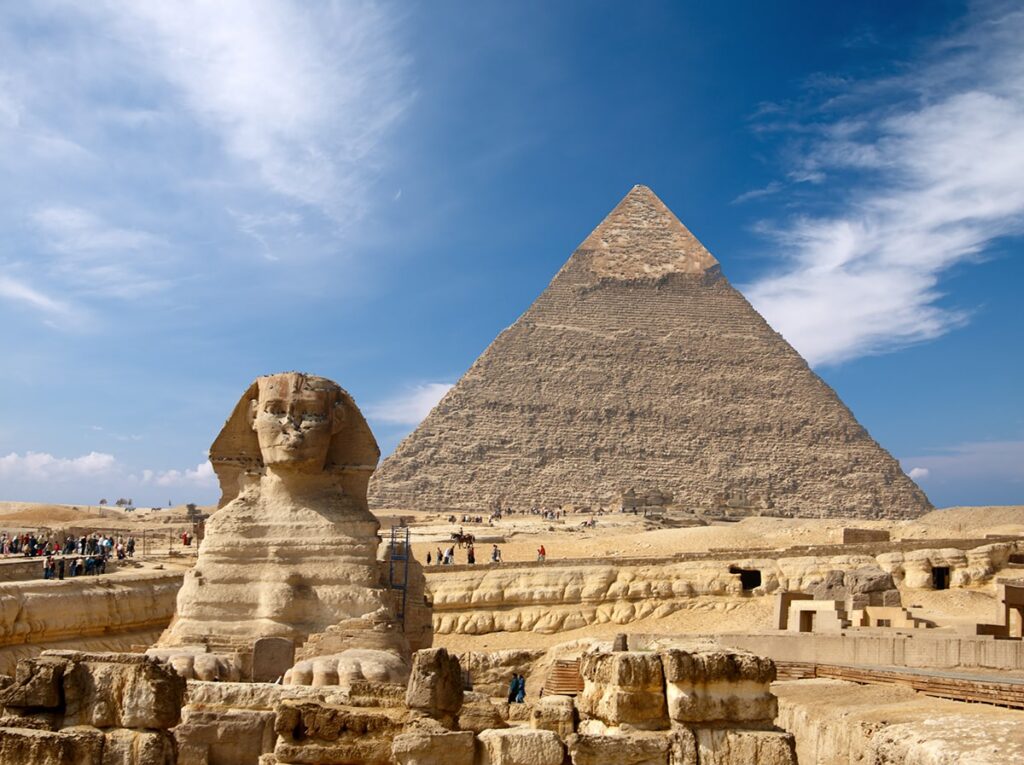Are you ready to learn about the mysteries of ancient Egypt? Get ready for an incredible journey through time as we look into the captivating civilization that thrived along the Nile River.
Facts About the Civilization in Ancient Egyptian
When studying the civilization in Ancient Egypt, it’s crucial to grasp the significant contributions they made to art, architecture, and governance.
Ancient Egypt was renowned for its impressive artistic accomplishments, such as the creation of intricate wall paintings and sculptures. The Egyptians also developed a distinctive style of architecture, exemplified by iconic structures like the Great Pyramids of Giza.
In terms of governance, Ancient Egypt boasted a sophisticated system of government led by pharaohs, who held both political and religious authority. They established a centralized administration and enacted laws that regulated various aspects of society.
Additionally, Ancient Egypt was one of the earliest civilizations to devise a system of writing known as hieroglyphics, which played a vital role in communication and record-keeping.
These facts about Ancient Egypt highlight their remarkable advancements and enduring legacy in history.
Nile River – Lifeblood of Egypt
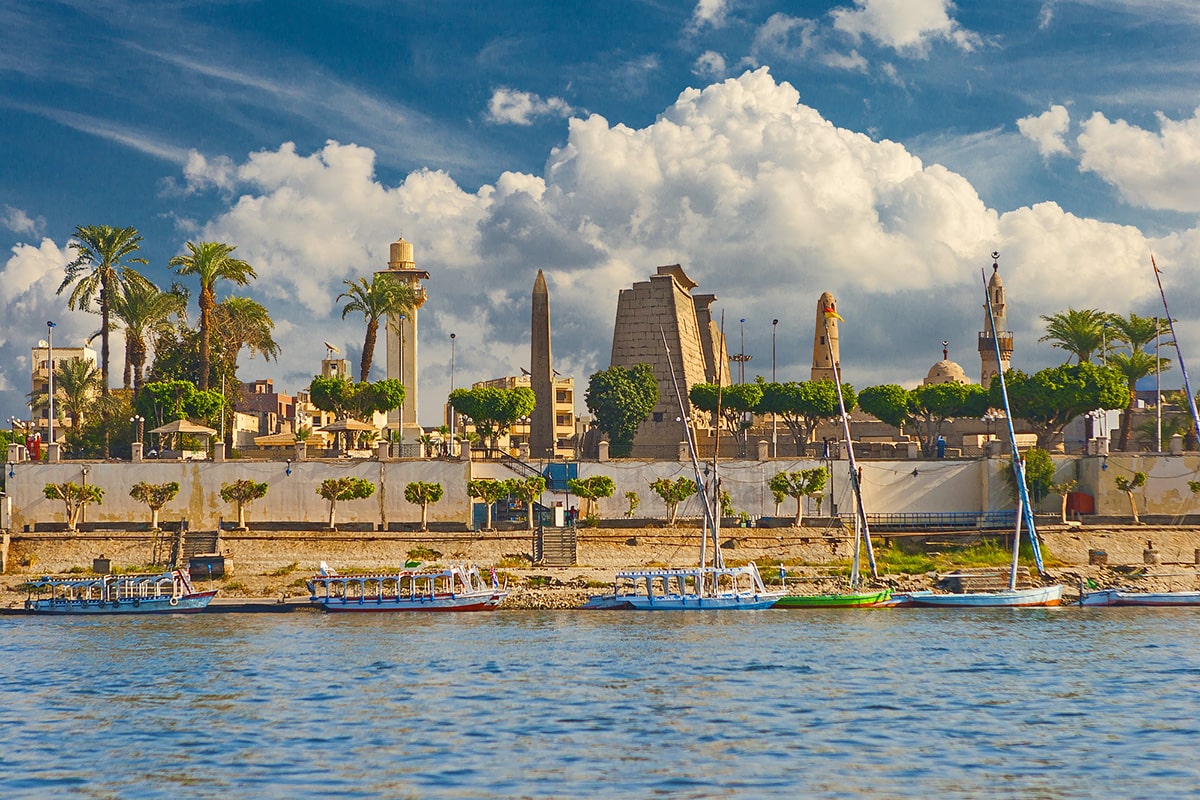
The Nile River plays a vital role in Egypt, serving as the primary source of resources and sustenance for its people.
Through its annual flooding, the river brings nutrient-rich sediment that fertilizes the land, enabling the cultivation of essential crops like wheat, barley, and flax.
Moreover, the Nile River acts as a crucial transportation route, facilitating trade and communication between different regions within Egypt.
Its waters are abundant with fish, providing a valuable source of protein for the Egyptian diet.
Additionally, the Nile supplies water for drinking, bathing, and irrigation, ensuring the survival and prosperity of the Egyptian civilization.
The ancient Egyptians relied heavily on the Nile for their livelihoods, to the extent that they worshipped it as a deity known as the god Hapi.
Pharaohs – Rulers of Ancient Egypt
Continuing your exploration of Ancient Egypt’s rich history, let’s uncover the power and influence of the pharaohs, revered rulers who governed the land along the life-giving Nile River.
The pharaohs were believed to be divine beings, chosen by the gods to lead and protect the people of Egypt. They held absolute power and were considered the ultimate authority in all matters, both religious and secular.
The pharaohs constructed magnificent temples and monuments, showcasing their wealth and expressing their divine status. They were responsible for maintaining order and stability, overseeing the administration of justice, and leading military campaigns to protect Egypt’s borders.
Their reigns were marked by grandeur and opulence, leaving a lasting legacy of architectural marvels and cultural achievements.
Pyramids – Miracles of Engineering
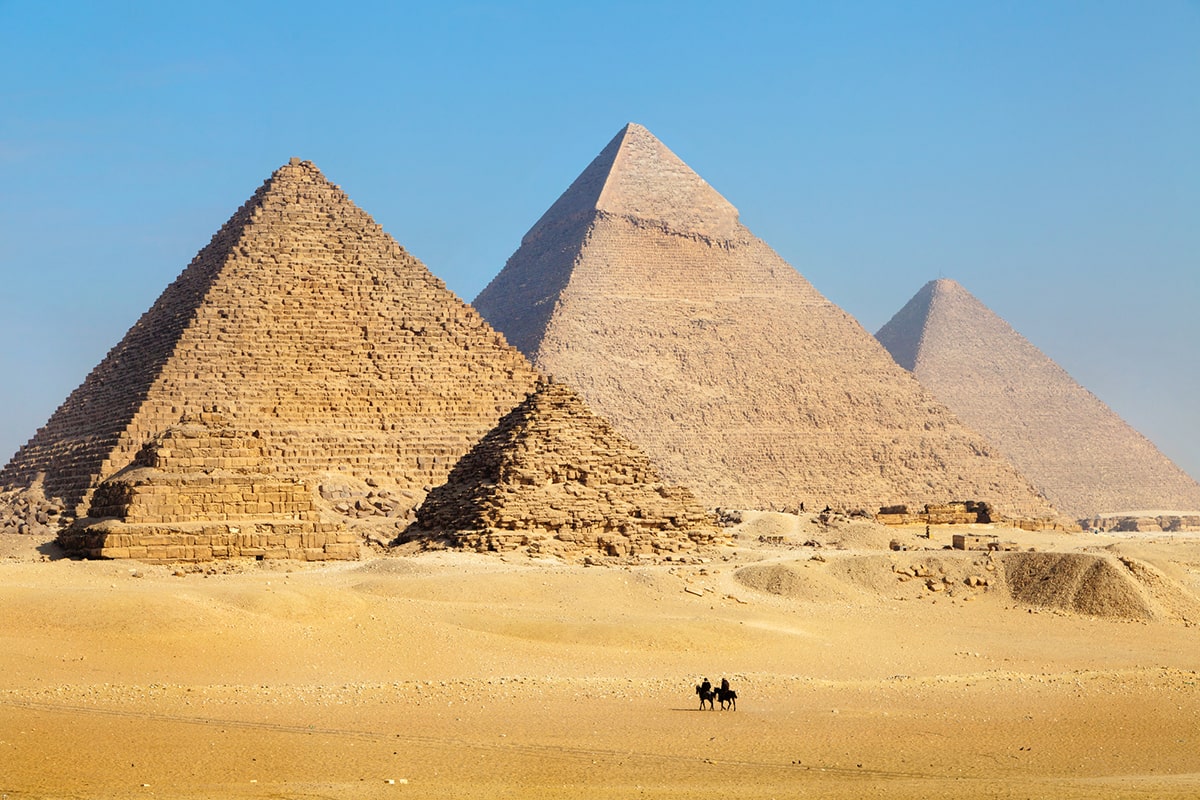
To continue our exploration of the power and influence of the pharaohs, let’s now uncover the remarkable pyramids, which were engineering marvels of Ancient Egypt.
These grand structures not only showcased the might of the pharaohs but also demonstrated the advanced engineering skills of the ancient Egyptians. Meticulously designed and constructed with precision, the pyramids were built using simple tools and techniques that continue to impress even modern engineers.
Crafted primarily from limestone and granite, these pyramids served as magnificent tombs for the pharaohs, symbolizing their eternal power and legacy. Among the most renowned is the Great Pyramid of Giza, a testament to the ingenuity and architectural prowess of the ancient Egyptians. Its colossal size, intricate internal structure, and precise alignment with the cardinal points stand as awe-inspiring reminders of the incredible engineering feats achieved by these ancient builders.
Hieroglyphics – Ancient Egyptian Writing
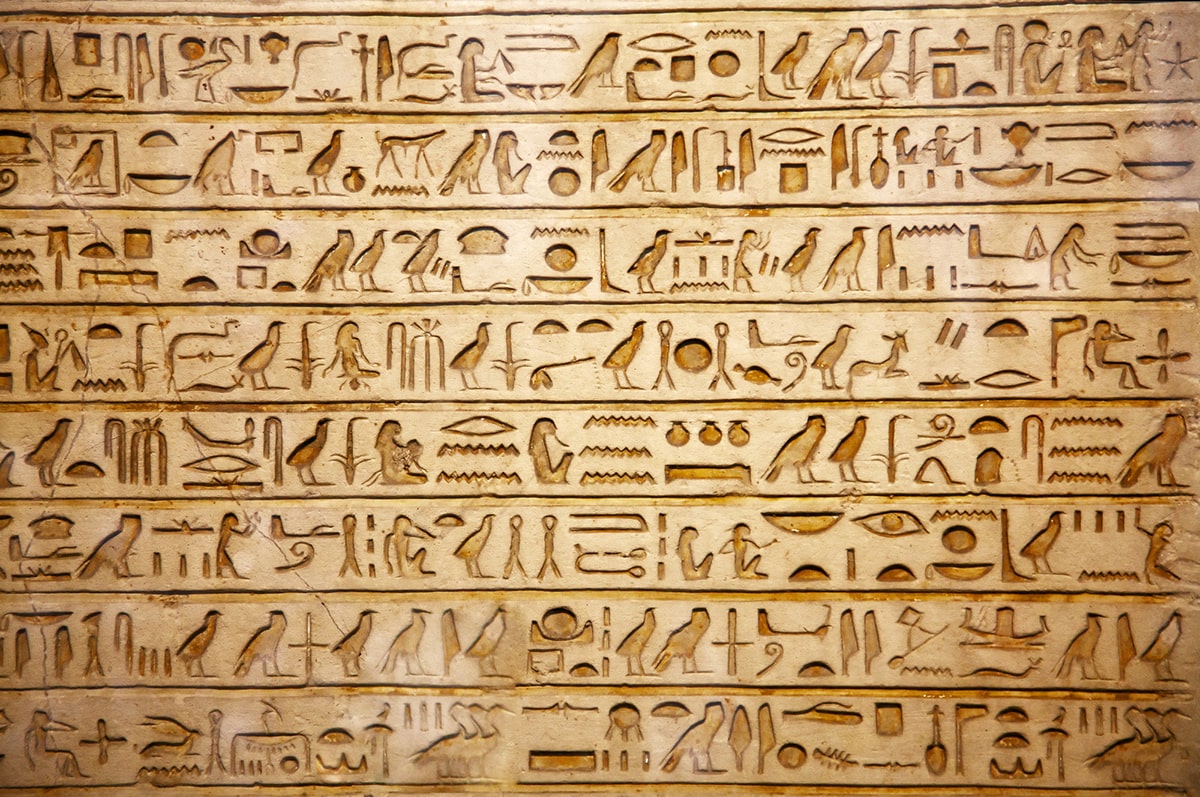
Continue your exploration of Ancient Egypt by immersing yourself in the captivating realm of hieroglyphics, the ancient Egyptian writing system.
Hieroglyphics weren’t mere symbols, but rather a sophisticated method of communication that encompassed both phonetic and ideographic elements. For over three thousand years, from around 3200 BCE to the 4th century CE, hieroglyphics played a vital role in the lives of the ancient Egyptians.
They were predominantly utilized for religious and monumental inscriptions, but also served administrative and everyday purposes. Comprising numerous individual characters that represented objects, sounds, and ideas, deciphering hieroglyphics posed a significant challenge until the discovery of the Rosetta Stone.
This remarkable artifact contained a decree inscribed in three scripts: hieroglyphics, Demotic, and Greek, leading scholars to successfully unravel the mysteries of this ancient writing system.
Facts About the Gods and Goddesses of Ancient Egypt
Ancient Egypt had a rich and diverse pantheon of gods and goddesses. The people of ancient Egypt believed in the existence of numerous deities, each with their own distinct powers and responsibilities.
One of the most famous gods was Ra, the sun god, who was considered the creator of all life. Another important goddess was Isis, who was revered as the protector of the pharaoh and a symbol of motherhood. Osiris, the god of the afterlife, played a crucial role in Egyptian mythology as the ruler of the underworld.
Additional popular gods included Horus, the god of the sky, and Anubis, the god of embalming and the dead. The ancient Egyptians built temples and performed rituals to honor these gods and seek their favor.
Mummification – The Art of Preserving the Dead
Did you know that the ancient Egyptians practiced a complex process called mummification to preserve the bodies of the deceased?
The process involved removing all internal organs, except for the heart, which was believed to house the soul.
The body was then cleansed and dried using natron, a type of salt, for approximately 40 days.
Next, the body was carefully wrapped in linen bandages, with amulets and charms placed between the layers. This wrapping process could take up to two weeks.
Finally, the mummy was placed in a sarcophagus, a wooden or stone coffin, and laid to rest in a tomb.
The Egyptians believed that by preserving the body, the soul would continue to exist in the afterlife.
Temples – Sacred Places of Worship
One could visit ancient Egyptian temples, sacred places of worship, to immerse themselves in the spiritual essence of their civilization. These temples weren’t only remarkable architectural feats but also served as hubs for religious and cultural activities.
The Great Temple of Amun at Karnak is particularly renowned, spanning over 60 acres. Inside these temples, visitors would encounter breathtaking statues of gods and pharaohs, intricate hieroglyphic inscriptions, and vivid wall paintings depicting religious ceremonies and mythological tales.
The Egyptians held the belief that the gods dwelled within these temples, thus treating them as divine abodes. People would flock to these sacred sites to offer prayers, make offerings, and seek guidance from the gods.
The temples were an indispensable part of Egyptian society, playing a vital role in upholding the cosmic order and ensuring the prosperity of the kingdom.
Facts About Ancient Egyptian Medicine and Healthcare
Ancient Egyptian medicine and healthcare were characterized by a sophisticated system of remedies and practices. They had an extensive knowledge of human anatomy and considered the heart to be the center of intelligence and emotion. Egyptian physicians utilized a combination of natural remedies, such as herbs and plants, along with rituals and incantations, to treat various ailments. They even performed surgeries, including amputations and dental procedures, using rudimentary tools and techniques.
The priests played a vital role in healthcare because they were believed to have a direct connection with the gods and the ability to invoke their healing powers. Despite the absence of modern medical technology, ancient Egyptian medicine was remarkably advanced for its time.
Facts About Cleopatra – The Last Pharaoh
Cleopatra’s reign as the last pharaoh of Ancient Egypt was marked by political intrigue and a captivating personal life. As you explore the facts about Cleopatra, you’ll uncover a woman who wasn’t only a powerful ruler but also a skilled diplomat.
Cleopatra was known for her beauty and charm, which she cleverly used to maintain her grip on power. She famously formed alliances with influential Roman leaders, such as Julius Caesar and Mark Antony, to safeguard Egypt’s interests.
Cleopatra was also well-educated and spoke multiple languages, enabling her to navigate the complex world of international politics. Despite her efforts, Cleopatra’s reign met its demise when her forces were defeated by Octavian, leading to her tragic death by suicide.
Art and Architecture in Ancient Egypt
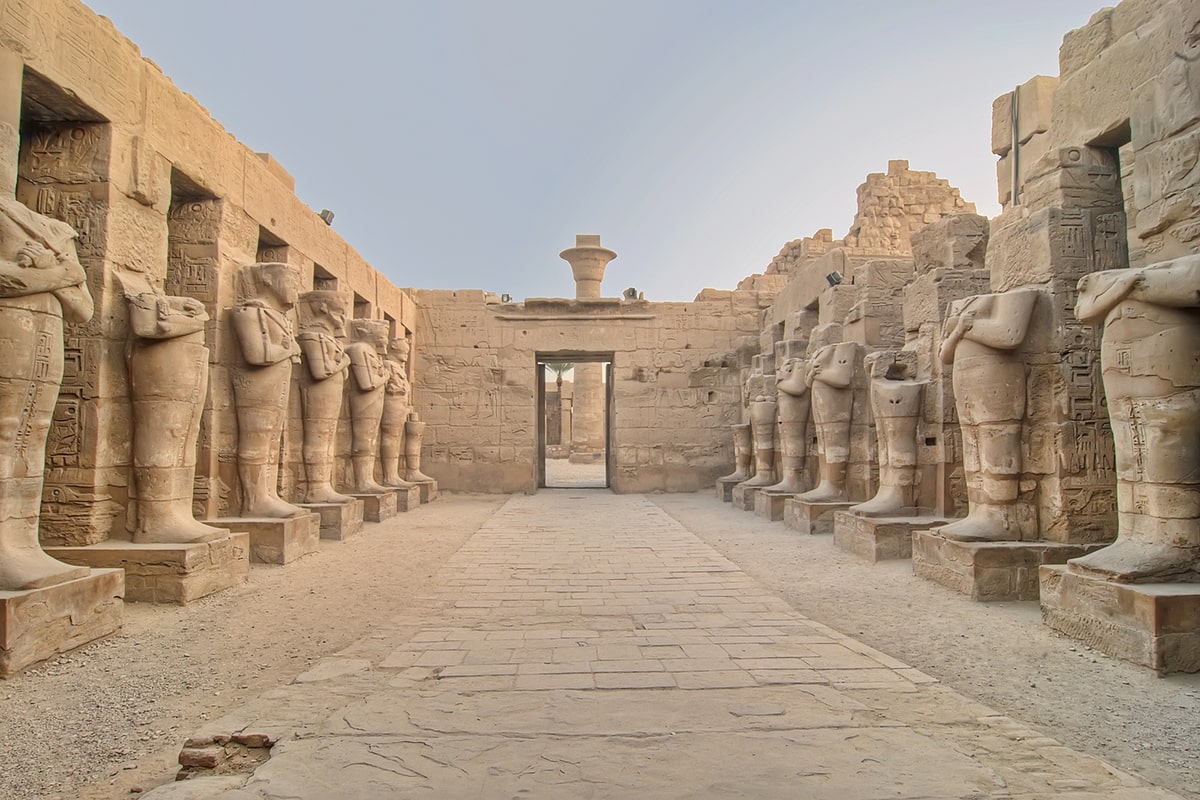
As you uncover the wonders of Ancient Egypt, you’ll encounter the captivating art and architecture that thrived during this ancient civilization.
Ancient Egyptian art is renowned for its unique style and symbolic representations. The Egyptians attributed great significance to art, considering it a vital component of their religious and cultural traditions. They crafted intricate paintings, sculptures, and carvings that depicted gods, pharaohs, and daily life. These artistic creations frequently emphasized the importance of the afterlife and the divine status of the pharaoh.
Architecture also played a crucial role in Ancient Egypt. The Egyptians constructed remarkable edifices such as pyramids, temples, and tombs. These structures not only boasted grand designs but also served practical purposes, such as housing the deceased pharaohs and providing sacred spaces for worshiping the gods.
The enduring allure of Ancient Egyptian art and architecture continues to captivate and inspire people worldwide.
Facts About Daily Life in Ancient Egypt
In your daily life in ancient Egypt, you’d have experienced a unique combination of culture, tradition, and customs.
The ancient Egyptians placed great importance on family and community. Your day would start early in the morning, as the Egyptians valued hard work and productivity. You’d have engaged in activities such as farming, fishing, or trading.
Education was highly regarded, and children would attend school to learn reading, writing, and arithmetic. Religion played a significant role, and you’d have participated in daily rituals and ceremonies to honor the gods.
The Nile River was central to your daily life, providing transportation, water for irrigation, and a source of food. You’d have also enjoyed leisure activities such as board games and music.
The Great Sphinx of Giza
During your visit to ancient Egypt, you’d have come across the Great Sphinx of Giza, positioned between the pyramids and safeguarding the plateau. This impressive structure, hewn from limestone, stands at a towering height of 66 feet and spans a length of 240 feet.
Sporting the body of a lion and the head of a human, the Sphinx is widely believed to represent the pharaoh Khafre, though its exact purpose remains a topic of scholarly debate. Many experts speculate that it symbolizes power and protection.
Despite enduring erosion and damage over the centuries, efforts have been made to restore and conserve this iconic monument. Presently, visitors continue to be captivated by the mysterious allure of the Great Sphinx, serving as a testament to the brilliance and craftsmanship of ancient Egypt.
Ancient Egyptian Burial Customs and Tombs
After admiring the Great Sphinx of Giza, positioned between the pyramids and guarding the plateau, you may have been curious about the captivating ancient Egyptian burial customs and tombs.
The ancient Egyptians held firm beliefs in the afterlife and placed significant importance on the preservation of the body. To ensure a successful journey to the afterlife, they developed intricate burial customs.
The most renowned tombs are the pyramids, which were constructed as grand resting places for the pharaohs. These colossal structures were filled with valuable treasures and offerings for the pharaoh’s voyage to the afterlife.
Alongside the pyramids, other types of tombs, such as mastabas and rock-cut tombs, were also utilized. These tombs housed elaborate artwork, hieroglyphs, and personal possessions, offering a glimpse into the beliefs and customs of ancient Egypt.
The Valley of the Kings
The Valley of the Kings is home to the royal tombs of ancient Egyptian pharaohs. Situated on the west bank of the Nile, near Luxor, it served as the final resting place for rulers of the New Kingdom period, spanning from the 16th to the 11th century BC. The valley was selected for its discreet location, offering protection against tomb raiders.
Over 60 tombs have been unearthed thus far, including the renowned tomb of Tutankhamun. These tombs were meticulously crafted and adorned, showcasing the opulence and authority of the pharaohs. Elaborate carvings and paintings depict religious ceremonies and scenes from the pharaoh’s life.
Despite attempts to conceal the tombs, many were plundered in ancient times, yet they still offer valuable insights into the civilization of ancient Egypt.
Ancient Egyptian Hierarchical Society
Ancient Egyptian society was structured in a hierarchical manner, with distinct roles and responsibilities for each individual. Occupying the highest position in the social pyramid was the pharaoh, who wielded absolute power and was revered as a deity on Earth.
Below the pharaoh, the nobles and priests played a crucial role in governance and the maintenance of religious rituals. Scribes, esteemed for their role in record-keeping and administration, held a respected position in society.
The middle class comprised artisans and craftsmen, who produced goods for both the elite and the general population. The majority of the population consisted of farmers and laborers, who toiled the land and contributed to the economy.
Slaves, typically prisoners of war or captured during raids, occupied the lowest rung of the social hierarchy. This hierarchical structure ensured order and stability, with each individual playing a vital role in the functioning of ancient Egyptian civilization.
Ancient Egyptian Mathematics and Science
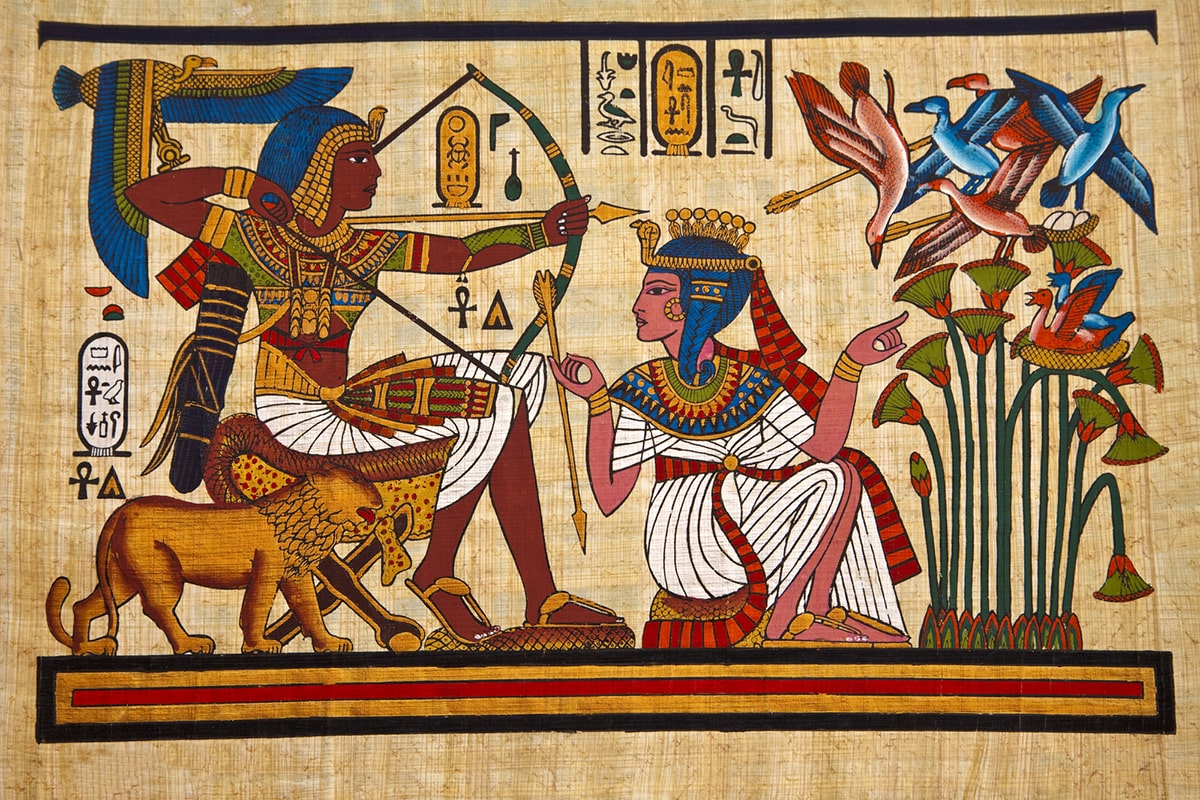
Discover the incredible achievements of the ancient Egyptians in the realm of mathematics and science.
The Egyptians possessed remarkable proficiency in mathematics, utilizing their knowledge to solve practical problems in construction, surveying, and commerce. They devised a number system based on ten, employing hieroglyphic symbols to represent various powers of ten. This system enabled them to perform fundamental arithmetic operations such as addition, subtraction, multiplication, and division.
Furthermore, the Egyptians made significant contributions to astronomy. Through careful observation of the stars and celestial bodies, they developed a highly accurate calendar.
Additionally, the Egyptians possessed a profound understanding of medicine and made advancements in anatomy, surgery, and pharmacology. Their knowledge and innovations served as the groundwork for future advancements in mathematics and science.
Ancient Egyptian Calendar and Timekeeping
Continuing our exploration of ancient Egyptian mathematics and science, let’s now explore the intriguing realm of ancient Egyptian calendar and timekeeping.
The ancient Egyptians had a distinctive and complex system for measuring time and organizing their calendar. Their calendar revolved around the cycles of the sun and the flooding of the Nile River, which held great significance in their agricultural society.
The Egyptian calendar consisted of 12 months, each comprising 30 days, with an additional five or six days at the year’s end. They divided the day into 24 hours, further dividing each hour into smaller intervals.
To measure time accurately, the Egyptians employed sundials, water clocks, and shadow clocks. Their remarkable understanding of timekeeping testifies to their inventiveness and intellect.
Facts About Trade and Commerce in Ancient Egypt
Discover the trade and commerce practices of ancient Egypt.
Trade was an essential part of the economy in ancient Egypt, connecting the civilization to other cultures and providing necessary resources.
Egyptians engaged in both domestic and international trade, exchanging highly sought-after commodities like gold, copper, linen, papyrus, and grain.
The Nile River played a crucial role as a trade route, facilitating the transportation of goods to and from different regions.
Egyptians relied on bartering, exchanging goods and services without the use of money.
They established extensive trade networks with neighboring regions such as Nubia, the Levant, and Mesopotamia.
The ancient Egyptians were skilled traders, and their commercial activities significantly contributed to their prosperity and cultural exchange with other civilizations.
Decline and Fall of Ancient Egypt
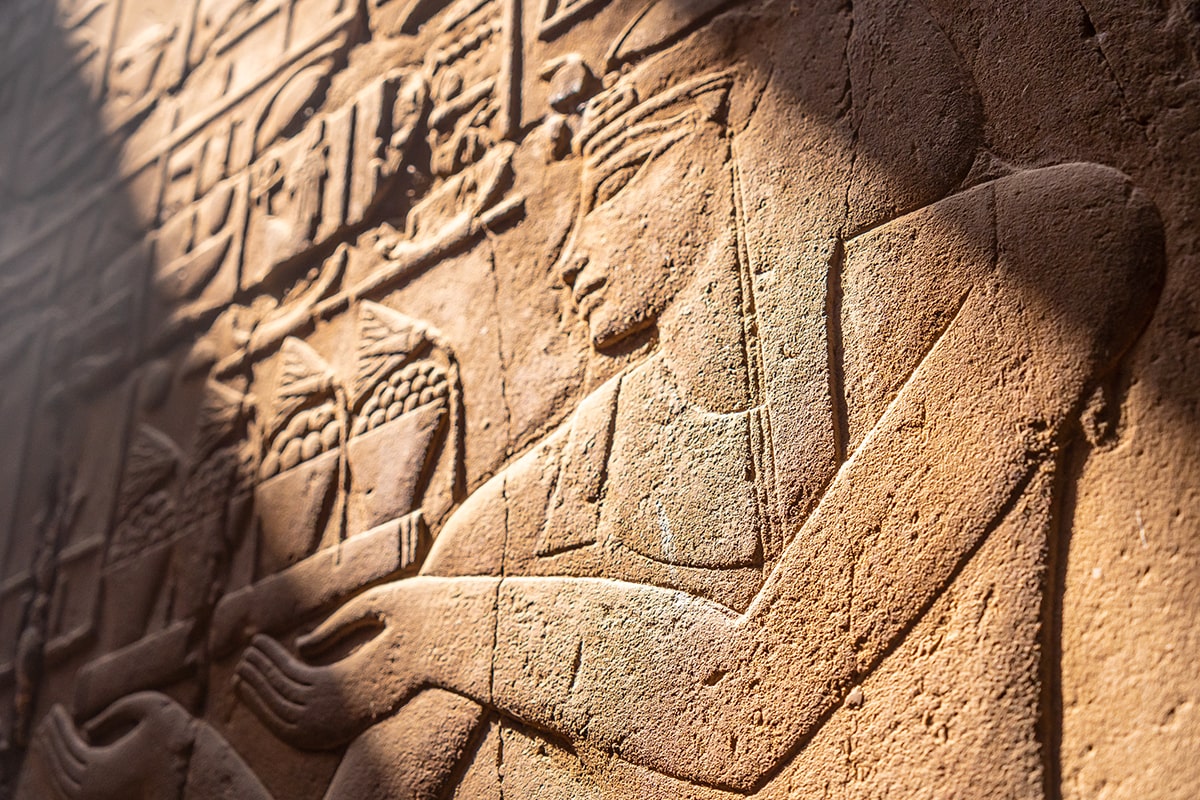
As you explore the decline and fall of Ancient Egypt, you’ll come to grasp the significant factors that led to the civilization’s eventual downfall.
One of the key factors was the invasion and conquest by foreign powers. The Assyrians, Persians, and Greeks all sought to control Egypt, which weakened its power and influence.
Internal conflicts and power struggles among the ruling dynasties also added to the destabilization of the kingdom.
Economic challenges, such as a decline in trade and a decrease in agricultural productivity, also played a role in Egypt’s decline.
The dependence on the Nile River for irrigation resulted in soil erosion and a decrease in fertility, impacting the ability to sustain a growing population.
Ultimately, these factors combined to bring about the fall of Ancient Egypt, marking the end of an era.

